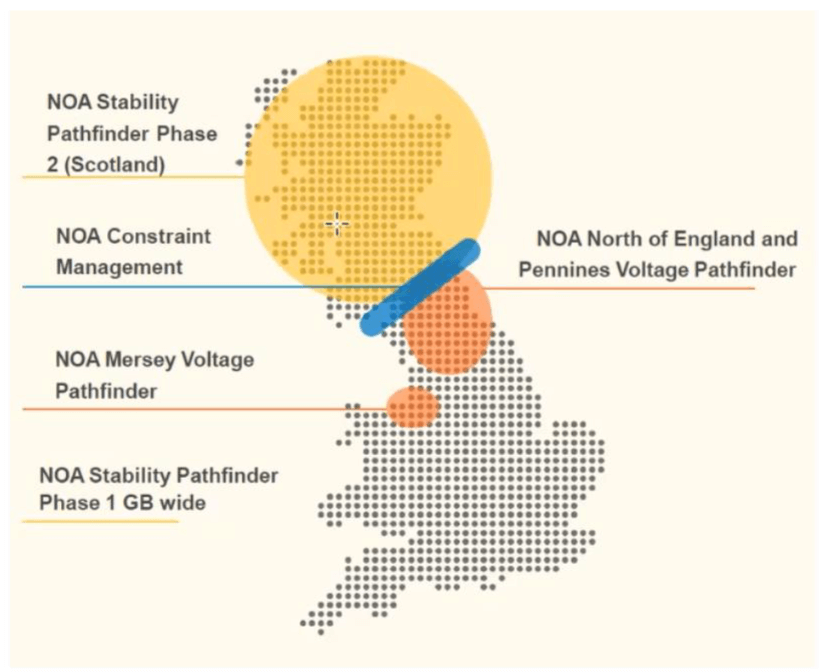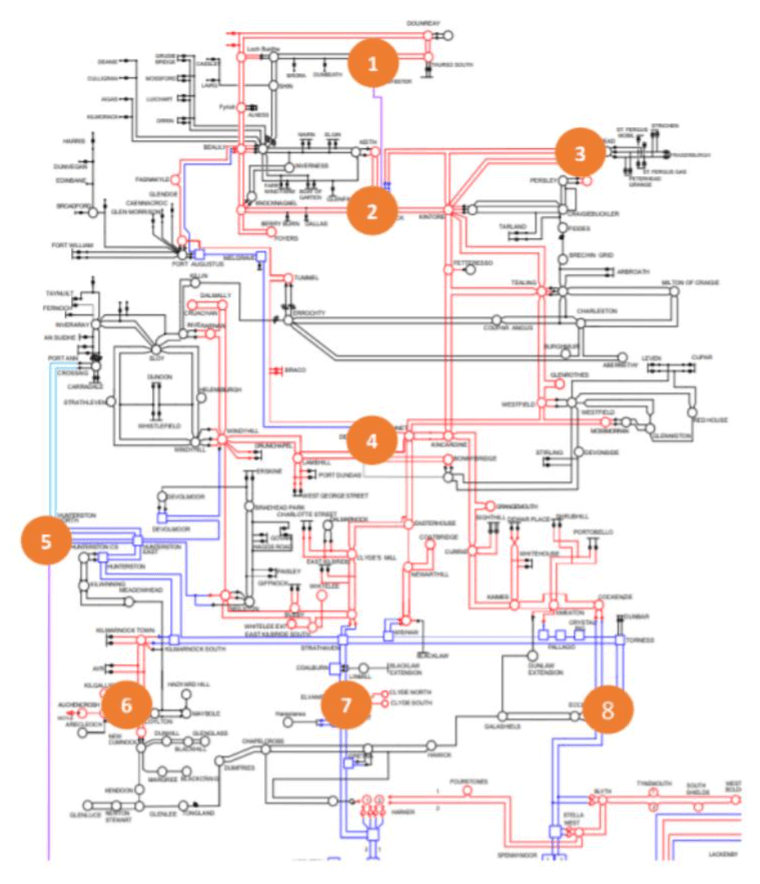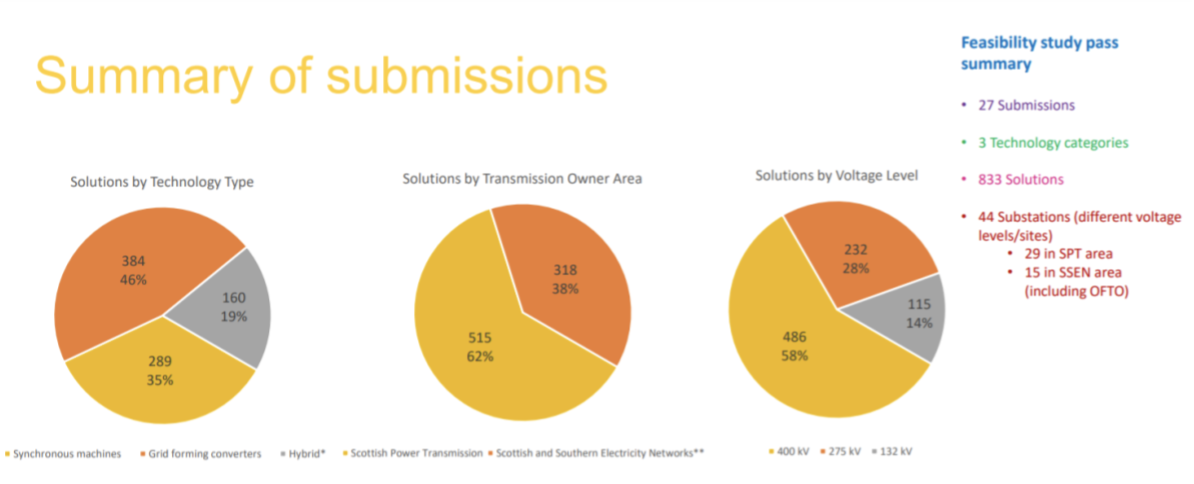National Grid Pathfinder 2
About the National Grid
The National Grid Pathfinder project is “a key enabler” of their net-zero ambition. The team is working to integrate non-synchronous energy sources such as wind and solar and storage into the grid to help them achieve their targets by 2025. Energy has traditionally been provided through synchronous generators, such as coal, thermo, and nuclear power.
“The pathfinders are a key enabler of our net-zero ambition.”
- Julian Leslie, Head of Networks
They must get their transmission system ready to handle 100% zero carbon electricity. Yet, the increase in inverter-based technologies, such as wind, solar and storage, leave the inherent stability of the network at risk. The team must therefore put systems in place to ensure the stability of the network while also meeting their net-zero targets.
“Stability is the inherent ability of the system to quickly return to acceptable operation following a disturbance.”
National Grid Operability Strategy Report pg. 3

Project Challenge
In order to transition to a low carbon system, the grid must decrease its reliance on fossil fuel generation to stabilise the system, while creating a more dynamic approach that will include non-synchronous power sources with a stable system.
To create this system National Grid (NG) has specific requirements that must be met to maintain the stability of the network – which includes inertia, short circuit levels, voltage, loss of mains protection and fault ride through.
We worked on Stability Pathfinder Phase - 2, which covers eight locations in Scotland, for the feasibility study. Here, the total requirement for the short circuit level is 8.4 GVA across all eight areas. The short circuit level is often represented in MVA or GVA. It is the power that can flow in a fault condition. Because of renewables, the short circuit level is dropping down. NG therefore asked people to tender solutions to this problem.

‘NOA Stability Pathfinder Phase 2’. Pg. 12
Project Solution
We worked with our client on a successful tender to respond to this challenge in four of these locations, as shown in the table below.
The technology type chosen for this project was the synchronous condenser, and we worked to carry out detailed assessments across all four sites to demonstrate the ability of this technology to meet NG’s requirements. These requirements were subject to updates at any time – so we had to stay up to date to ensure success.
We supported our client throughout the tender process, responding to all queries promptly, and attending meetings with The NG team where needed.
The result was that all four sites were approved by NG and selected to take part in the Stability Pathfinder Project.
No.SiteTechnology TypeMachines/ SolutionsPoint of Study VoltageTNO
1.RothienormanSynchronous Condenser2 x 125 MVA400kVSHETL (Scottish Hydro Electric Transmission Limited)
2.Kilmarnock SouthSynchronous Condenser2 x 60 MVA400kVSPT (Scottish Power Transmission)
3.BlackhillockSynchronous Condenser2 x 90 MVA400kVSHETL
4.PeterheadSynchronous Condenser2 x 90 MVA400kVSHETL

‘Feasibility Study Summary’, pg. 4
References
Operability Strategy Report Dec 2021, Page 9, 34 & 35.
NOA Stability Pathfinder Phase 2 EOI Summary 2020, Page 12
NOA Stability Pathfinder Phase 2 Feasibility Study Summary 2021, Page 4. https://www.nationalgrideso.com/future-energy/projects/pathfinders/stability/Phase-2 Accessed 03/03/22